동사변형
시제별 동사변형은 동사의 시간적 의미 전달을 담당합니다. 한국어에는 현재시제, 미래시제, 과거시제가 있습니다. 현재시제는 현재 진행 중인 일이나 진실한 사실을 나타내며, 미래시제는 앞으로 일어날 일을 나타냅니다. 과거시제는 이미 지나간 일이나 과거의 상황을 나타냅니다.
인칭별 동사변형은 주어와 동사가 일치하는 것을 나타냅니다. 한국어에는 1인칭, 2인칭, 3인칭이 있습니다. 1인칭은 말하는 사람을 나타내며, 2인칭은 상대방을 나타냅니다. 3인칭은 주로 이야기하는 사물이나 개체를 나타냅니다.
수별 동사변형은 주어가 단수인지 복수인지에 따라 동사의 형태가 달라집니다. 주어가 단수일 때는 동사의 복수형이, 주어가 복수일 때는 동사의 단수형이 사용됩니다.
활용별 동사변형은 규칙활용 동사와 불규칙활용 동사로 나뉩니다. 규칙활용 동사는 어미의 형태 변화 없이 동사의 어간만 바뀝니다. 반면에 불규칙활용 동사는 특정한 어미 변화를 겪습니다. 이는 어미의 형태가 규칙과 상이한 동사들로, 개별적으로 외워야 합니다.
동사 활용에 따라 수동태와 부정태 동사변형이 있습니다. 수동태 동사변형은 주어가 동작의 대상이 되는 경우 사용됩니다. 예를 들어, “사과가 먹히다”에서 사과가 주어이면서 동시에 동작의 대상이 되기 때문에 수동태 동사변형을 사용합니다. 부정태 동사변형은 동작이 부정적으로 나타날 때 사용됩니다. 예를 들어, “그는 먹지 않는다”에서 먹지 않는다는 동작이 부정적인 의미를 가지므로 부정태 동사변형입니다.
자동사와 타동사는 동사의 의미와 함께 사용되며, 주체의 의지나 노력에 따라 달라집니다. 자동사는 주체의 의지 또는 노력 없이 스스로 움직이는 동작을 나타내는 반면, 타동사는 주체의 노력이나 영향으로 다른 대상에게 동작을 가하는 동사입니다.
준말과 축약형 동사변형은 현대 한국어에서 많이 사용되며, 간결하고 쉽게 표현하기 위한 방법입니다. 주로 일상 대화나 글에서 자주 사용되지만, 공식적인 문서나 글에서는 자제해야 합니다. 이 방식은 일부 동사나 연결되는 조사, 어미 등을 생략하여 표현하는 것으로, 문맥에서 알아볼 수 있는 경우가 많습니다.
선사 시제는 과거 시제와 관련하여 사용되는 시제로, 선조나 역사적 사건을 나타내거나 가상의 조건문에서 주로 사용됩니다. 체언-동사의 결합으로 이루어지며, 과거 시제와는 역할이 다릅니다.
여기서 자주 묻는 질문 몇 가지를 알아보겠습니다.
Q: 영어 동사 활용과 한국어 동사 활용은 어떻게 다른가요?
A: 영어에서는 주로 동사의 변화를 시간적 의미에 맞추는 형태로 나타내는 반면, 한국어에서는 시제뿐만 아니라 인칭, 수, 활용 등 다양한 요소에 의해 동사의 형태가 변화합니다.
Q: 동사 활용표를 참고할 수 있는 자료가 있나요?
A: 예, 한국어 동사 활용표를 찾아볼 수 있는 다양한 자료가 있습니다. 인터넷 검색 엔진에서 “한국어 동사 활용표”로 검색하면 많은 자료를 찾아볼 수 있습니다.
Q: 프랑스어나 스페인어에서도 동사 변화가 있는 건가요?
A: 그렇습니다. 프랑스어나 스페인어도 동사의 변화가 있으며, 언어마다 다른 활용 규칙을 가지고 있습니다. 이들 언어에서 동사 변화에 대한 자료를 찾기 위해서 “프랑스어 동사 변화 PDF”나 “스페인어 동사 변화 PDF”와 같은 키워드로 검색하면 관련 자료를 찾을 수 있습니다.
동사변형은 한국어 문법에서 중요한 개념입니다. 시제, 인칭, 수, 활용 등 다양한 요소에 따라 동사의 형태가 변화하며, 이 변화는 문장의 의미 전달에 큰 역할을 합니다. 영어, 프랑스어, 스페인어 등 다른 언어의 동사 변화도 참고하면 도움이 될 것입니다. 즐겁게 한국어 공부에 임하시기 바랍니다!
사용자가 검색한 키워드: 동사변형 영어 동사 활용, 한국어 동사 활용표, 프랑스어 동사 변화 PDF, 스페인어 동사 변화 PDF
Categories: Top 74 동사변형
따라부르는 영어 동사 변화 노래 128 Irregular Verbs Song
여기에서 자세히 보기: taomalumdongtien.net
영어 동사 활용
When learning a new language, understanding how verbs are conjugated is an essential step towards becoming fluent. In this article, we will explore the intricacies of 영어 동사 활용 (conjugation of English verbs) for Korean learners. From verb tenses to irregularities, we will cover the topic in depth, providing you with the necessary tools to master English verbs.
영어 동사 활용 기초 (Basic Conjugation of English Verbs)
The conjugation of English verbs may feel overwhelming at first, but once you grasp the patterns and rules, it becomes easier to navigate the various tenses and forms. Here are the basic conjugation rules for regular verbs in English:
1. Simple Present Tense: In the simple present tense, verbs are conjugated differently depending on the subject. For example:
– I speak
– You speak
– He/she/it speaks
– We speak
– They speak
2. Simple Past Tense: In the simple past tense, regular verbs generally add “-ed” to the base form of the verb. For example:
– I played
– You played
– He/she/it played
– We played
– They played
3. Present Continuous Tense: The present continuous tense indicates ongoing actions in the present. To form this tense, use the base verb with an “-ing” suffix. For example:
– I am speaking
– You are speaking
– He/she/it is speaking
– We are speaking
– They are speaking
4. Past Continuous Tense: Similar to the present continuous tense, the past continuous tense describes ongoing actions in the past. To form this tense, use the past tense of “be” (was, were) with the base verb and “-ing”. For example:
– I was speaking
– You were speaking
– He/she/it was speaking
– We were speaking
– They were speaking
Irregular Verbs and their Conjugations
While regular verbs follow a predictable pattern, irregular verbs have their own unique conjugation rules. These verbs do not adhere to the “-ed” rule in the simple past tense. Here are a few examples of irregular verbs and their conjugations:
1. Be:
– Present: I am, you are, he/she/it is, we are, they are
– Past: I was, you were, he/she/it was, we were, they were
2. Go:
– Present: I go, you go, he/she/it goes, we go, they go
– Past: I went, you went, he/she/it went, we went, they went
3. Have:
– Present: I have, you have, he/she/it has, we have, they have
– Past: I had, you had, he/she/it had, we had, they had
4. Do:
– Present: I do, you do, he/she/it does, we do, they do
– Past: I did, you did, he/she/it did, we did, they did
It is important to familiarize yourself with the irregular verbs and their conjugations as they are commonly used in the English language.
영어 동사 활용 FAQ (Frequently Asked Questions)
Q: Are there any exceptions to the regular verb conjugation rules?
A: Yes, there are a few exceptions. Some verbs undergo slight spelling changes when adding the “-ed” suffix in the simple past tense. For example, the verb “study” becomes “studied” instead of “studyed.” Additionally, some verbs are irregular in both the present and past tenses, like “put,” which remains the same in both forms.
Q: Are all irregular verbs irregular in the same way?
A: No, irregular verbs do not follow a specific pattern. Each irregular verb has its own unique conjugation. Therefore, it is important to memorize the irregular verbs individually.
Q: How can I practice English verb conjugation?
A: Practice is the key to mastering verb conjugation. Engage in conversations, read English texts, and write sentences using different verb tenses. Additionally, numerous online resources offer interactive exercises and quizzes specifically targeting verb conjugation.
Q: Can I rely on translating Korean verb forms directly into English?
A: While it may be tempting to directly translate Korean verb forms, it is important to understand that verb conjugation varies between languages. Try to immerse yourself in English and tackle verb conjugation through practice and exposure to the language.
Q: Are there any resources available to aid in learning English verb conjugation?
A: Yes, there are several resources available for Korean learners looking to improve their English verb conjugation skills. Online language learning platforms, textbooks, and language exchange programs can be valuable tools in your language learning journey.
In conclusion, 영어 동사 활용 (conjugation of English verbs) is an essential aspect of language learning. By understanding the rules and patterns of verb conjugation, as well as familiarizing yourself with irregular verbs, you can enhance your fluency and communication skills in English. Practice regularly, and soon, verb conjugation will become second nature to you.
한국어 동사 활용표
한국어 (Korean) is a fascinating language with a unique structure and grammar system. A vital aspect of mastering this language is understanding verb conjugation, which plays a pivotal role in communicating various tenses, moods, and aspects. To assist learners, 한국어 동사 활용표 (Korean Verb Conjugation Chart) acts as a handy tool that simplifies the process by providing a comprehensive reference guide. In this article, we will delve into the intricacies of 한국어 동사 활용표, its significance, and explore commonly asked questions regarding verb conjugation.
The Importance of 한국어 동사 활용표
한국어 동사 활용표, or Korean Verb Conjugation Chart, serves as a valuable resource for Korean language learners as it presents a concise overview of the different verb endings and forms used in various contexts. Since Korean has an expansive verb conjugation system unlike English, with its many irregularities and exceptions, it can be quite challenging to grasp without guidance. By providing a clear visual representation of the conjugation patterns, a 한국어 동사 활용표 streamlines the learning process, aiding learners in understanding and applying the correct verb forms.
Verb Conjugation in Korean
In Korean, verbs undergo changes to reflect different grammatical functions, including tense, mood, aspect, formality, and honorifics. The 한국어 동사 활용표 showcases these variations, helping learners identify the appropriate verb endings for specific purposes. This fundamental understanding is essential for fluent and accurate communication in Korean.
The Korean Verb Conjugation Chart
The 한국어 동사 활용표 is organized into columns, each representing a specific tense, mood, or aspect. The rows correspond to different verb stems, and cells within the chart contain the conjugated forms of those verbs for specific grammatical functions. The chart is meticulously designed to facilitate quick and easy reference, with verbs categorized based on their stem endings and the conjugation rules associated with each category.
The comprehensive nature of the 한국어 동사 활용표 allows learners to navigate through a vast array of verb conjugations, ranging from simple present tense to more complex conditional or honorific forms, all in one place. By utilizing this chart, learners can save time and effort instead of flipping through grammar textbooks or online references to find the appropriate verb ending for a given context.
FAQs about 한국어 동사 활용표
Q: How do I use 한국어 동사 활용표 effectively?
A: Start by familiarizing yourself with the various columns representing tenses, moods, and aspects. Then, find the appropriate verb stem in the rows and match it with the desired function, locating the corresponding conjugation form within the chart. With practice, this process becomes more intuitive, allowing for quicker recall of verb conjugations.
Q: Are there any exceptions to verb conjugation rules?
A: Yes, Korean language does have irregular verbs that do not follow the typical conjugation patterns displayed in the 한국어 동사 활용표. These exceptions require additional memorization and understanding of their unique conjugation rules.
Q: Can I solely rely on 한국어 동사 활용표 for verb conjugations?
A: While 한국어 동사 활용표 serves as an excellent reference tool, it is crucial to study and understand the underlying grammar principles governing verb conjugation in Korean. By comprehending the rules and patterns behind the chart, learners can enhance their proficiency and adapt to nuanced situations that fall outside the standard conjugation patterns.
Q: Are there any online resources or apps available for 한국어 동사 활용표?
A: Yes, numerous online resources and language learning apps provide interactive, digital versions of the 한국어 동사 활용표. These tools incorporate exercises, quizzes, and audio features to assist learners in practicing verb conjugation and reinforcing their comprehension.
Q: How can I remember all the verb conjugations?
A: Memorizing verb conjugations can initially feel overwhelming, but with consistent practice and exposure to various contexts, they become more intuitive over time. Practicing through conversations, reading, and listening to Korean media can reinforce conjugation usage as well. Additionally, creating flashcards or mnemonic devices for irregular verbs may aid in retention.
In conclusion, 한국어 동사 활용표 (Korean Verb Conjugation Chart) is an indispensable tool for Korean language learners. By providing a comprehensive and accessible reference guide, it simplifies the complex process of verb conjugation, enabling learners to communicate accurately and fluently in Korean. While this chart serves as an excellent resource, it is essential to understand the grammar principles underlying verb conjugation for complete mastery of the language. With consistent practice and exposure, mastering verb conjugations becomes an achievable feat, granting learners the ability to express themselves with precision and eloquence in Korean.
주제와 관련된 이미지 동사변형

동사변형 주제와 관련된 이미지 8개를 찾았습니다.
![규칙형 '-ar' 동사(현재형) [방구석스페인어] 규칙형 '-Ar' 동사(현재형) [방구석스페인어]](https://blog.kakaocdn.net/dn/b8WcaI/btqKZoJwhXW/ihQe52fGo7mLPBMzLaZuJK/img.jpg)
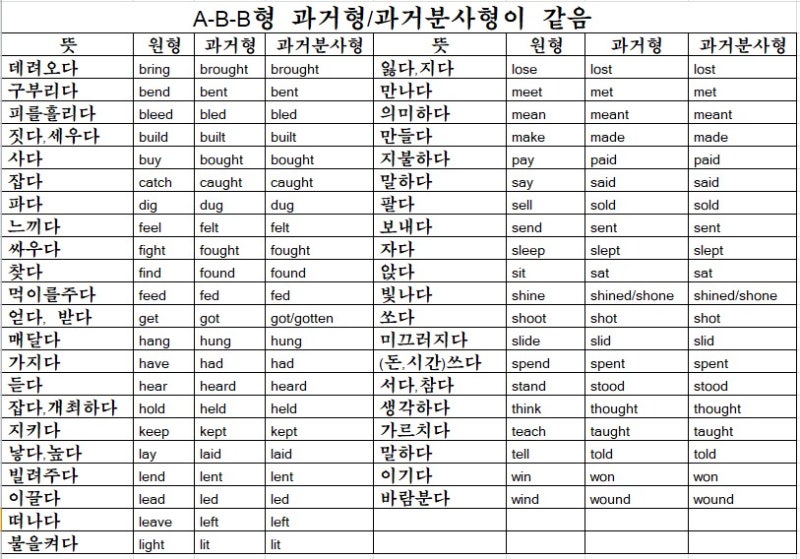


![영어 동사의 3단 변화 (규칙형) 쉽게 정리 [-ed 발음] 영어 동사의 3단 변화 (규칙형) 쉽게 정리 [-Ed 발음]](https://t1.daumcdn.net/cfile/tistory/9993FB415EB0B9B82D)
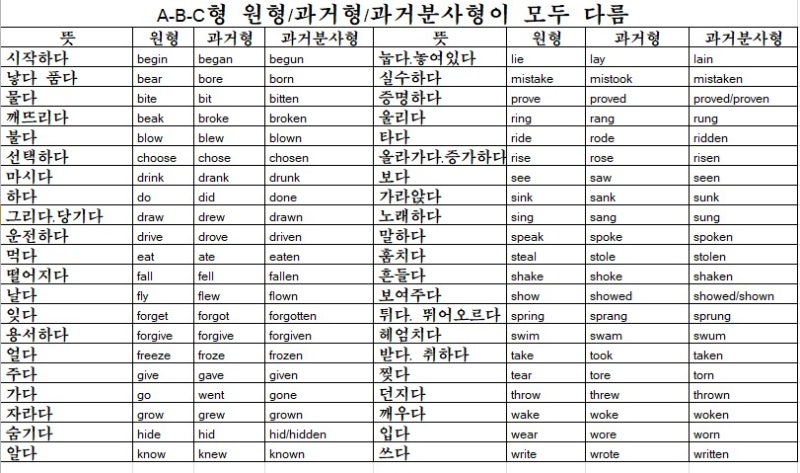
![불규칙 동사 변형 연습 ] - begin - begins - began - YouTube 불규칙 동사 변형 연습 ] - Begin - Begins - Began - Youtube](https://i.ytimg.com/vi/tyQq_7ZsZOM/maxresdefault.jpg)
![🇫🇷[프랑스어 발음 #9] VENIR 동사 변형 conjugaison - YouTube 🇫🇷[프랑스어 발음 #9] Venir 동사 변형 Conjugaison - Youtube](https://i.ytimg.com/vi/LmAvjVpyjGQ/maxresdefault.jpg)
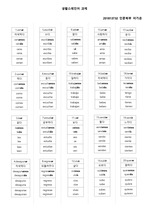


![🇫🇷[프랑스어 발음 #14] METTRE 동사 변형 conjugaison - YouTube 🇫🇷[프랑스어 발음 #14] Mettre 동사 변형 Conjugaison - Youtube](https://i.ytimg.com/vi/lbtppmffFwQ/mqdefault.jpg)
![스페인어 동사변형] 규칙동사의 규칙의 모든 것 | 현재, 불완료과거, 단순과거, 미래, 가정법 - YouTube 스페인어 동사변형] 규칙동사의 규칙의 모든 것 | 현재, 불완료과거, 단순과거, 미래, 가정법 - Youtube](https://i.ytimg.com/vi/lXPX7TKgkiM/maxresdefault.jpg)
![일본어독학] ます(마스)의 동사변형형태 동사활용 일본어독학] ます(마스)의 동사변형형태 동사활용](https://blog.kakaocdn.net/dn/boRnd1/btqEQYPQZXX/629RvsUpghhMTrqXmdDspK/img.jpg)



![bring / brings / brought ] - 불규칙 동사 변형 연습 - YouTube Bring / Brings / Brought ] - 불규칙 동사 변형 연습 - Youtube](https://i.ytimg.com/vi/4yN9UKW_lu4/maxresdefault.jpg)
![A Starter 초급 한국어] 기본 12 동사 변형 12 Basic Korean verbs : 팟빵 A Starter 초급 한국어] 기본 12 동사 변형 12 Basic Korean Verbs : 팟빵](https://img.podbbang.com/pbi/t/640/375/0/503/154/000154503/154503.jpg)

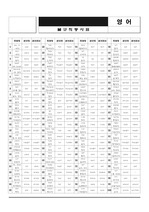
![시원스쿨 스페인어] Estar - 규칙인 듯 규칙아닌 동사변형 - YouTube 시원스쿨 스페인어] Estar - 규칙인 듯 규칙아닌 동사변형 - Youtube](https://i.ytimg.com/vi/DrsJZFAZZNU/maxresdefault.jpg)
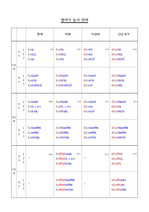
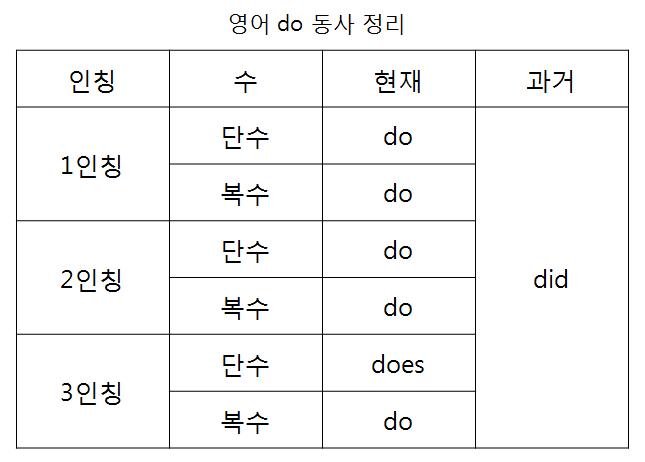

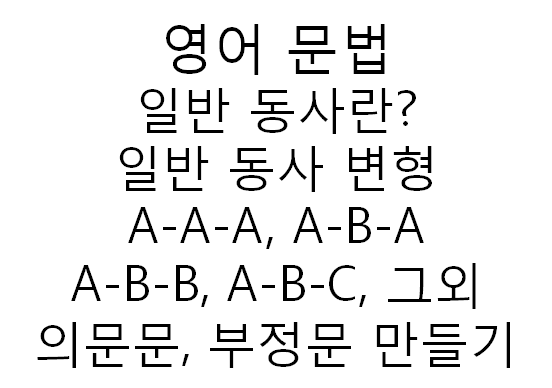



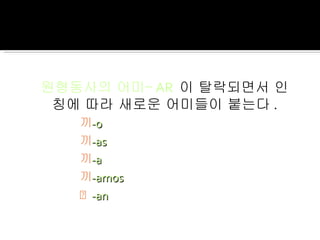
![스페인어 수다]EP27- 스페인어 접속법2/ 접속법현재동사변형/규칙변형과주요불규칙 : 팟빵 스페인어 수다]Ep27- 스페인어 접속법2/ 접속법현재동사변형/규칙변형과주요불규칙 : 팟빵](https://img.podbbang.com/img/pb_m/thumb/x200/1774456.png?_1680748110)

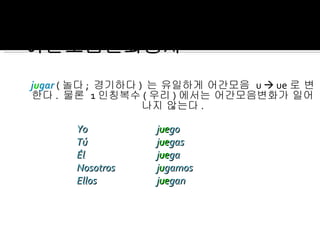
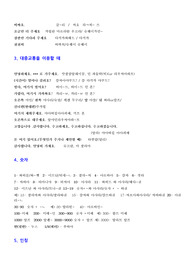

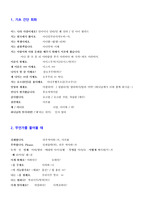
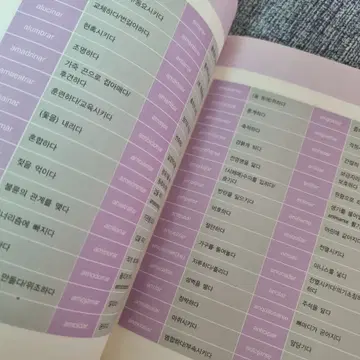
Article link: 동사변형.
주제에 대해 자세히 알아보기 동사변형.